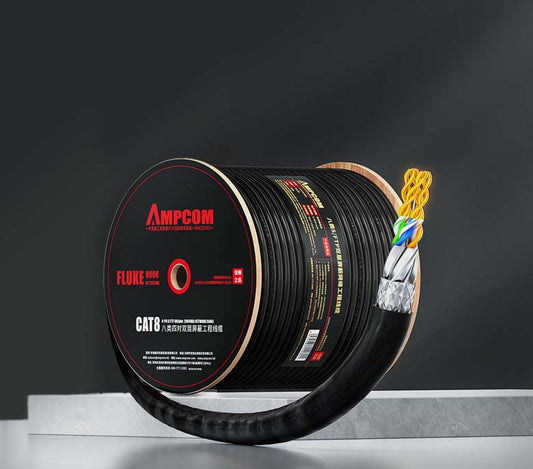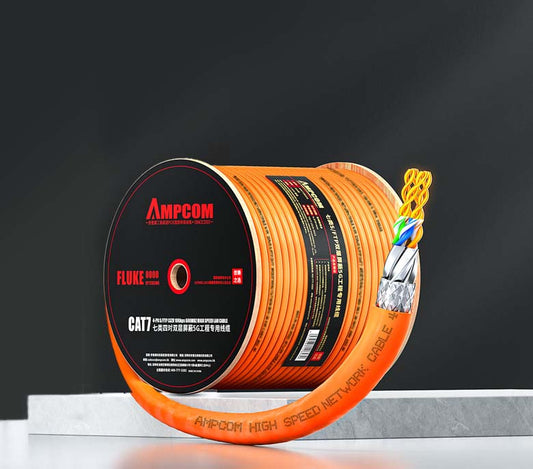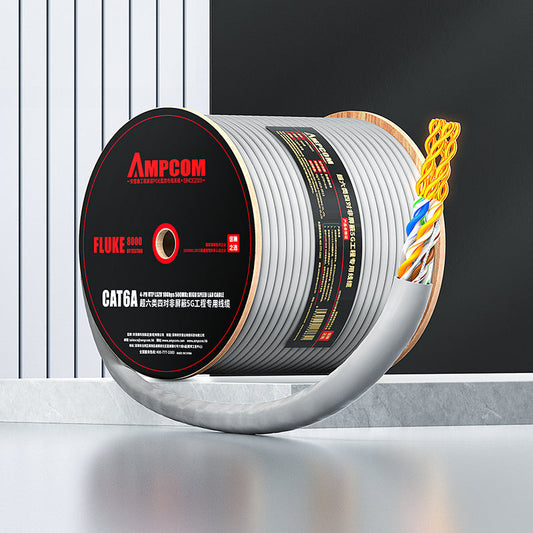TL;DR
- Design from the PD backward — ensure required power at the device after cable loss.
- Higher power (PoE++) makes voltage drop critical; shorten runs and use thicker copper.
- Watch thermal bundling in dense racks; de-bundle or improve airflow.
- Measure real voltage at PD under load; adjust if margin is thin.
PoE Standards Overview
| Standard | Class | Pairs | PSE Power | PD Power |
|---|---|---|---|---|
| 802.3af (PoE) | 0–3 | 2 | 15.4 W | 12.95 W |
| 802.3at (PoE+) | 4 | 2 | 30 W | 25.5 W |
| 802.3bt Type 3 | 5–6 | 4 | 60 W | 51 W |
| 802.3bt Type 4 (PoE++) | 7–8 | 4 | 90–100 W | 71–90 W |
PSE = power sourcing equipment (switch/injector); PD = powered device (AP, camera, phone). PoE/PoE+ use 2 pairs; PoE++ uses all 4 pairs to lower current per pair.
Power Budget Essentials
- Check PD input power requirement from the spec sheet.
- Add cable & connector losses (I²R + contact resistance).
- Include headroom (5–20%) for temperature and tolerances.
Voltage Drop Calculation
Approximate drop: V_drop ≈ I_total × R_loop. 802.3bt (4-pair) halves current per pair compared with 802.3at (2-pair).
| Gauge | Ω / 100 m | Round Trip / Pair |
|---|---|---|
| 24 AWG | ≈ 8.5 Ω | ≈ 17 Ω |
| 23 AWG | ≈ 6.8 Ω | ≈ 13.6 Ω |
| 28 AWG | ≈ 21.5 Ω | ≈ 43 Ω |
Warm bundles increase resistance and insertion loss. For slim cords, see Ultra-Slim Cat6a 28AWG.
Wire Gauge & Length Factors
- Use 23 AWG for long or high-power PoE++ channels.
- Keep 28 AWG patch totals under 5 m combined.
- Re-certify channels if adding midspans or extenders.
Worked Examples
PoE+ to AP (80 m Cat6 23 AWG)
PD ≈ 25.5 W; I_total ≈ 0.49 A; drop ≈ 2.7 V — acceptable.
PoE++ to PTZ Camera (90 m Cat5e 24 AWG)
PD ≈ 71 W; I_total ≈ 1.33 A; drop ≈ 5 V — may brown out; shorten or upgrade to 23 AWG.
Mixed 28 AWG Patches
85 m horizontal + 7 m slim patch adds noticeable resistance — keep short and few.
Calculator Tips
- Start from PD required watts.
- Model each segment (23/24 vs 28 AWG).
- Select 2-pair (af/at) or 4-pair (bt) correctly.
- Add 10–20 % margin for temperature.
- Round up losses; verify on-site with PoE meter.
Troubleshooting Checklist
- De-bundle and improve airflow around warm trunks.
- Shorten or replace high-resistance patch cords.
- Use shielded paths and verify bonding in EMI areas — see Shielded vs Unshielded.
- Place a midspan closer to high-power PDs.
FAQ
How far can PoE++ (90 W) run?
Design for < 100 m with 24 AWG; prefer 23 AWG or midspan closer to PD for safety margin.
Do 28 AWG patch cords cause issues?
Not if short (< 5 m total). Long runs raise heat and voltage drop.
Does shielding affect PoE?
PoE works on UTP and STP. Shielding helps in high-EMI zones if properly grounded.
Will speed (2.5G/5G/10G) change PoE behavior?
Negotiation is independent, but denser bundles and heat affect both signal and power stability.
Further Reading
These links strengthen topic connectivity without cluttering the main text.



